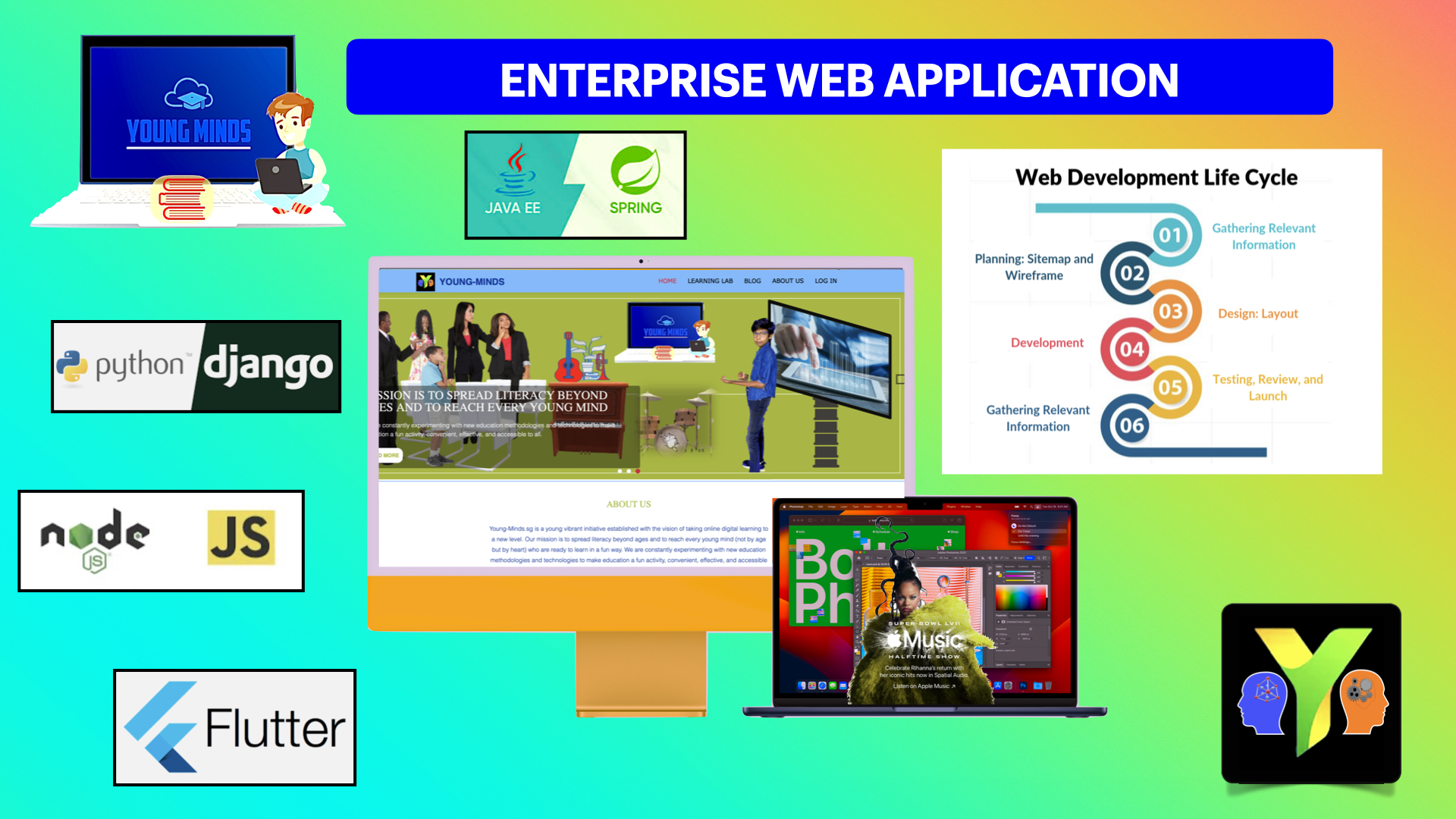Beginner’s Guide & Building blocks to Design an enterprise web application [Part II]
Let's expand our knowledge base from a simple website to enterprise web application say for example building Stock Market enterprise Application. How do we select the technology, and which one is the best for the development and deployment.

The choice of technology for the development and deployment of an enterprise web application for a stock market application will depend on several factors such as scalability, security, and ease of development. Some popular choices include:
Java and Spring Framework: Java is a popular choice for enterprise web applications due to its scalability, security and ease of development. Spring Framework is a popular choice for developing web applications in Java, as it provides a wide range of features such as security, data access, and web services.
Python and Django Framework: Python is another popular choice for web development and is known for its simplicity and ease of use. The Django framework is a popular choice for developing web applications in Python, as it provides a lot of built-in features such as security, data access, and web services.
JavaScript and Node.js: JavaScript and Node.js are increasingly being used for developing web applications. Node.js provides an easy way to develop web applications and also has a large ecosystem of modules and packages.
Ultimately, the best technology will depend on the specific needs of your application, and it's best to consult with an experienced development team to make the decision.
Let's expand our knowledge base from above option to Flutter framework for agnostic solution. Flutter framework for the Stock Market Web Application, mobile application for both Apple iOS and Google Android. What are the pros and con?
Flutter is an open-source mobile application development framework created by Google. It can also be used to build Stock Market Web application, mobile application for both Apple iOS and Google Android. Here are some pros and cons of using Flutter for a stock market web application:
Pros:
- Hot Reload: With Flutter's hot reload feature, developers can make changes to the code and see the results in real-time, which makes the development process faster and more efficient.
- Cross-platform: Flutter allows you to write code once and run it on multiple platforms, including web, mobile, and desktop. This can save time and resources when developing a stock market web application that needs to be accessible on different devices and platforms.
- User Interface: Flutter has a rich set of customizable widgets that allow developers to create beautiful, responsive and high-performance user interfaces.
Cons:
- Limited Community: As Flutter is relatively new, the community is not as large as other frameworks such as React or Angular, which means that there may be a smaller pool of developers with experience in Flutter and fewer resources available.
- Large file size: Applications built with Flutter can have larger file sizes compared to other frameworks, which may impact the performance on low-end devices.
- Limited access to device-specific features: Flutter does not have built-in access to device-specific features such as the camera, GPS, and sensors, although it can use plugins to access these features.
Overall, Flutter is a good choice for a stock market web application, mobile as it allows for fast and efficient development, has a rich set of customizable widgets, and supports multiple platforms. However, it's important to consider the size of the community and the file size of the application before making a decision.

